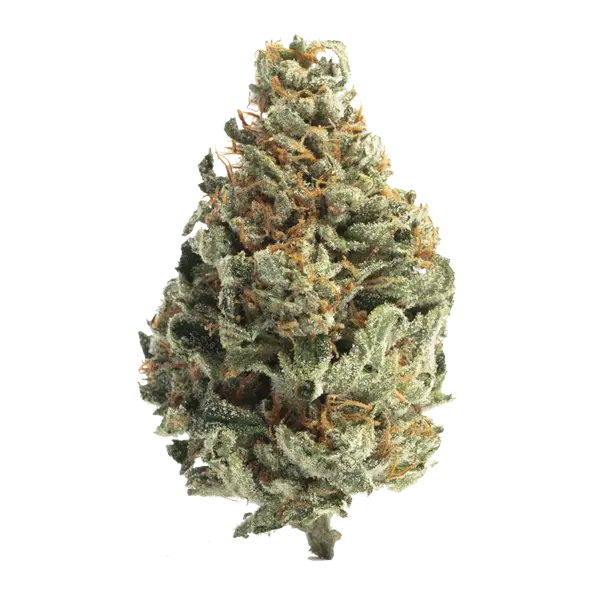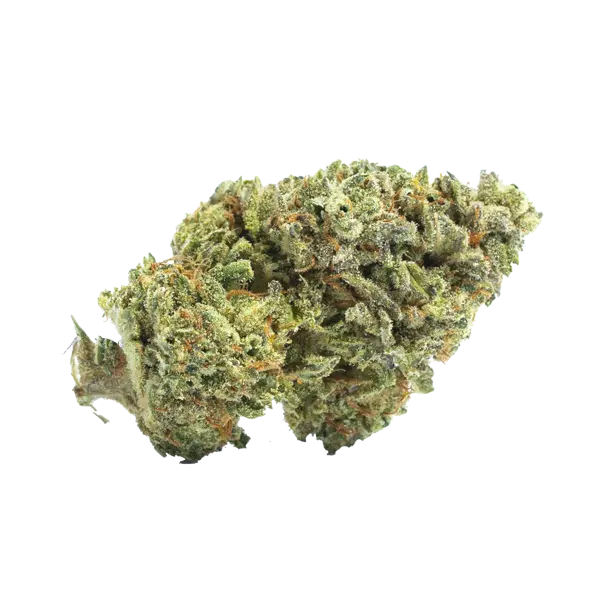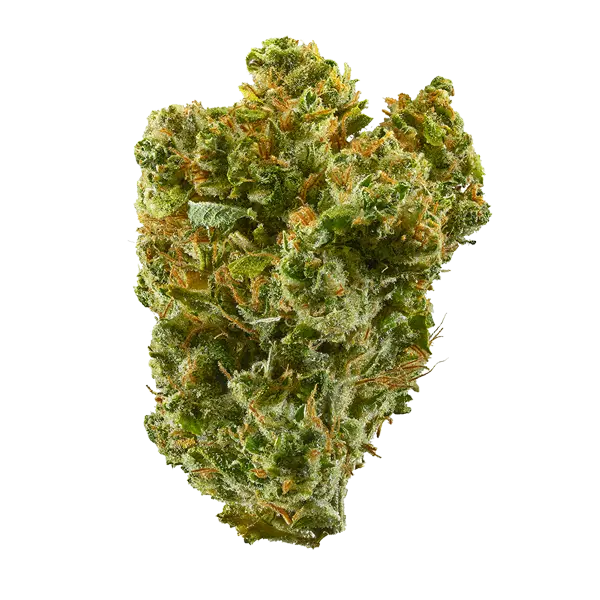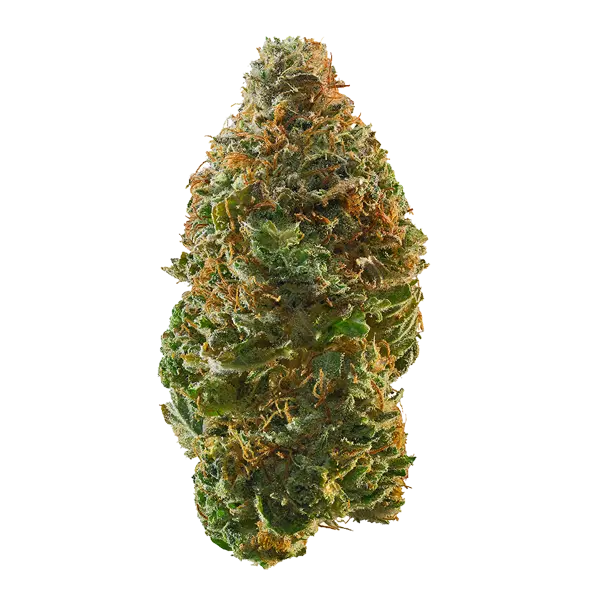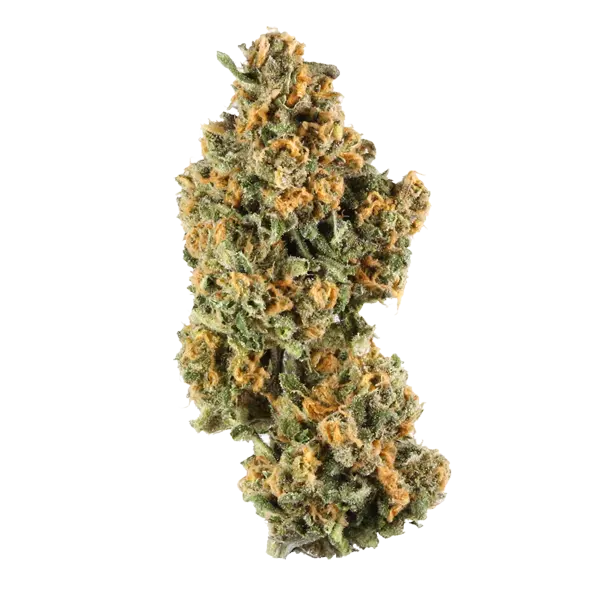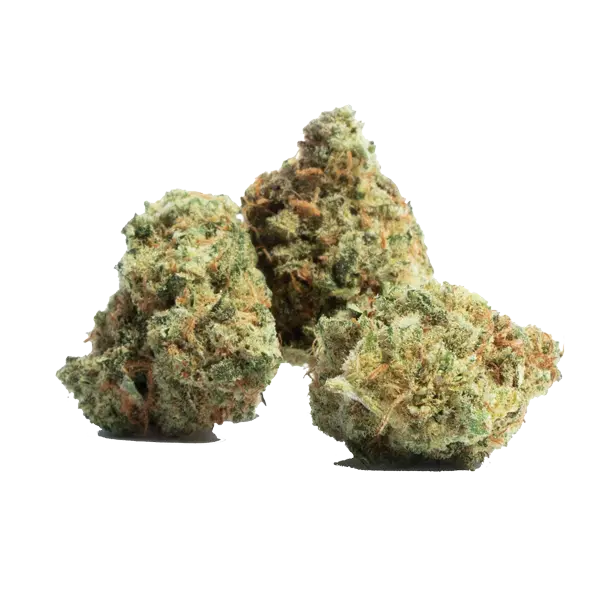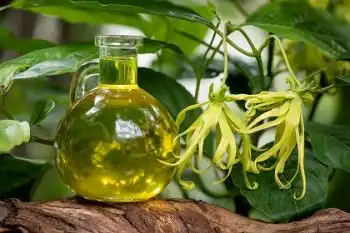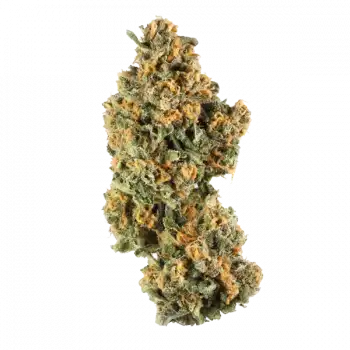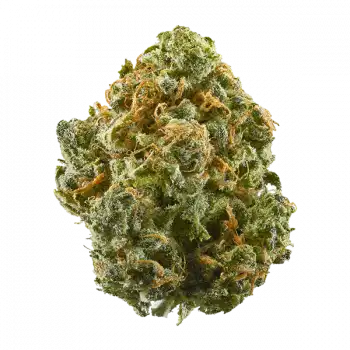The buds of Deadwood are medium to large, with a solid, tightly-packed structure typical of indica-dominant strains. The leaves are a yellowish-green, twisted through with vibrant orange pistils. A sprinkling of cloudy, amber-colored trichomes adds to the visual appeal, giving the buds a slightly golden glow and a sticky texture. When properly cured, Deadwood emits a deep berry fragrance, complemented by musky, herbal notes. Grinding the buds releases a dank, earthy aroma. When smoked, Deadwood burns with a harsh, acrid smoke that can tickle the palate and make the eyes water, leaving a taste of damp earth and fruitiness on the exhale.
The high from Deadwood can take up to 15 minutes to reveal its full effects. Initially, users may experience an increase in blood pressure, leading to physical sensations like flushing cheeks and increased salivation. These are soon followed by sensory distortions, such as auditory and visual changes, a warping of depth perception, and a sensation of time dilation. These psychedelic effects can be enhanced with engaging media, such as music or visually rich movies. Despite these sensory changes, Deadwood does not heavily impact cognitive functions, allowing users to maintain a somewhat clear mind while enjoying the body high.
As the high progresses, users will feel waves of relaxation spreading from the neck through the core and limbs. This deep physical relaxation can lead to a sensation of wading through Jello, making any physical exertion feel cumbersome. The body high also promotes a calm mood, helping to fade away any earlier stresses or anxieties. This state can be particularly enjoyable when shared with friends, offering a pleasant, social experience. However, Deadwood's effects can lead to couch-lock, making it a better choice for evening or nighttime use when users can afford to be sedentary.
Medically, Deadwood offers several benefits. Its soothing effects can help alleviate symptoms of stress, depression, anxiety, and PTSD. The strain's analgesic properties make it effective in dulling physical pain, whether acute or chronic, as well as reducing inflammation, which can relieve headaches and other minor irritations. In the right conditions, Deadwood can also serve as a sleep aid, helping to combat insomnia without inducing strong, recursive thoughts, making it suitable for those prone to panic or with low THC tolerance.
For cultivators, Deadwood presents a rewarding challenge. As seeds are not available online, prospective growers need to obtain clippings from mature plants to cultivate as clones. Deadwood can be grown indoors or outdoors, with outdoor success requiring a semi-humid, Mediterranean-like climate. The plants tend to be short and bushy with strong lateral branching. Regular pruning is necessary to ensure light and air reach the lower flowering nodes. Indoors, Deadwood typically flowers within 8 to 9 weeks.
